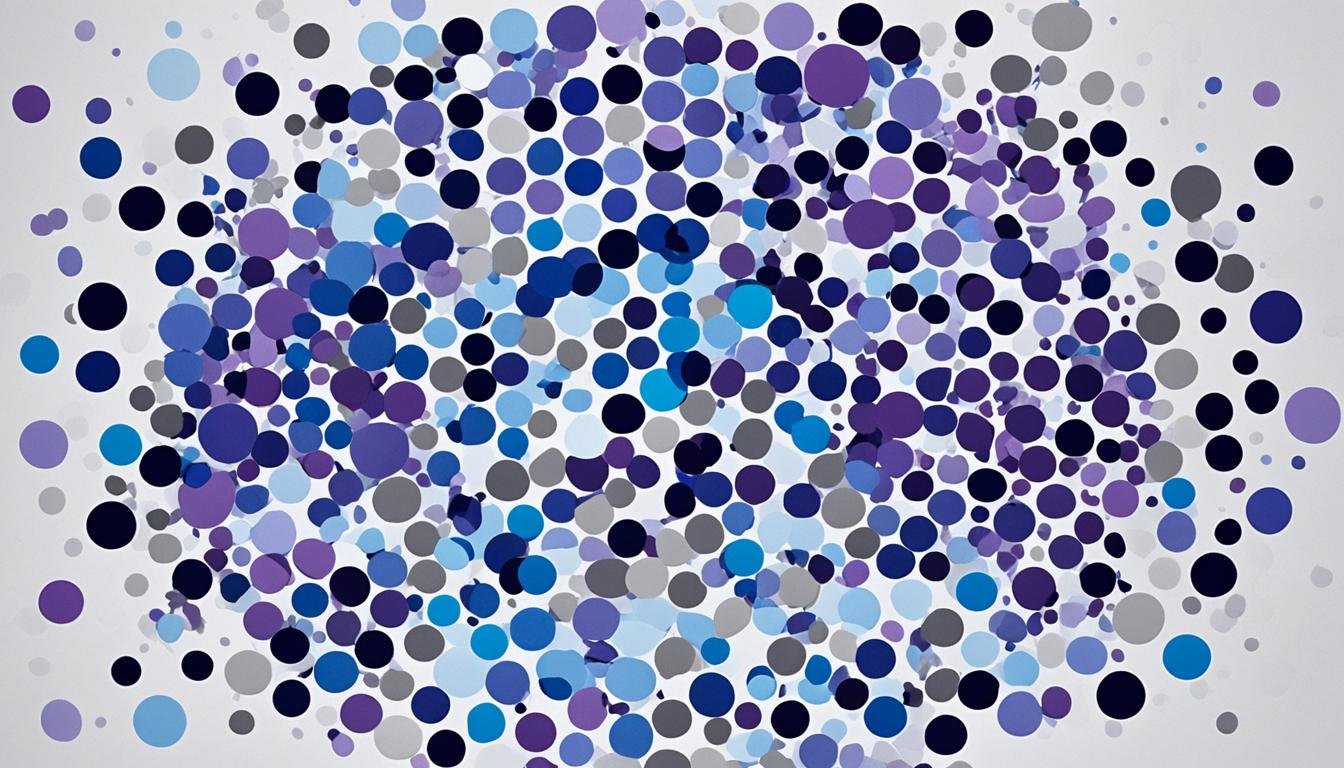What Race Has the Most Depression?
When it comes to mental health, understanding the prevalence and disparities among different racial and ethnic groups is crucial. Research has shown that there are significant variations in depression rates across races in the United States. Factors such as socio-economic status, access to healthcare, and cultural differences in help-seeking behaviors contribute to these disparities.
For instance, studies have revealed that African Americans and Hispanics tend to have higher rates of major depression compared to Whites. However, after controlling for confounding variables, Hispanics and Whites exhibit similar rates, while African Americans have lower rates than Whites. These differences can be attributed to various factors including greater health burdens and lack of health insurance among minority individuals.
Key Takeaways:
- Racial and ethnic groups in the United States experience varying rates of depression.
- African Americans and Hispanics have higher rates of major depression compared to Whites.
- After adjusting for confounders, Hispanics and Whites exhibit similar rates while African Americans have lower rates than Whites.
- Socio-economic status, access to healthcare, and cultural differences influence depression rates among different racial groups.
- Targeted interventions and policies are needed to address mental health disparities among minority populations.
Racial Disparities in Depression Rates
Research has shown that there are significant disparities in depression rates among different racial groups. African Americans and Hispanics tend to have higher rates of major depression compared to Whites. However, after adjusting for confounders, Hispanics and Whites exhibit similar rates, while African Americans have lower rates than Whites. These disparities may be attributed to factors such as socio-economic status, access to healthcare, and cultural differences in help-seeking behaviors.
Prevalence of Depression by Race
The prevalence of depression varies among different racial and ethnic groups in the United States. Studies have consistently shown that African Americans and Hispanics experience higher rates of major depression compared to Whites. However, it is important to note that within these racial groups, there is also significant heterogeneity in depression rates.
For example, within the African American community, the prevalence of depression may differ among different subgroups such as African Caribbean individuals or African immigrants. Similarly, within the Hispanic community, there may be variations in depression rates among Mexican Americans, Puerto Ricans, or Cuban Americans.
These disparities in depression rates can be attributed to various factors. Socio-economic status plays a significant role, with individuals from lower socio-economic backgrounds generally experiencing higher rates of depression. Discrimination, both systemic and interpersonal, also contributes to the higher prevalence of depression among racial minorities, as it can lead to chronic stress and feelings of hopelessness.
Cultural factors, including stigma surrounding mental health and help-seeking behaviors, can also impact depression rates among racial and ethnic groups. For example, some minority communities may have cultural norms that discourage openly discussing mental health or seeking professional help, leading to underreporting and lower rates of diagnoses.
It is essential to address these disparities in depression rates among racial and ethnic groups in order to ensure equitable access to mental health resources and improve overall well-being within these communities.
Race and Depression Statistics:
| Racial/Ethnic Group | Depression Prevalence |
|---|---|
| African Americans | Higher rates compared to Whites |
| Hispanics | Higher rates compared to Whites |
| Whites | Lower rates compared to African Americans and Hispanics |
African Americans and Hispanics consistently demonstrate higher rates of depression compared to Whites. However, it is crucial to recognize the individual differences within these racial and ethnic groups and consider the diverse experiences and circumstances that contribute to these variations.
Addressing the prevalence of depression by race requires comprehensive efforts, including tackling socio-economic barriers, combating discrimination, promoting culturally competent mental healthcare, and raising awareness about mental health in diverse communities. By understanding and addressing these disparities, we can work towards a more inclusive and equitable mental health landscape for all racial and ethnic groups in the United States.
Mental Health Disparities Among Races
Mental health disparities exist among different racial and ethnic groups in the United States. Minority populations, such as African Americans and Hispanics, often face greater challenges in accessing mental health services and receiving adequate care. This can be attributed to various factors, including socio-economic barriers, cultural stigmas surrounding mental health, and lack of culturally competent care.
For instance, minority communities frequently experience higher levels of poverty and limited access to health insurance, which can hinder their ability to seek and afford mental health treatment. Additionally, cultural beliefs and norms surrounding mental health may discourage individuals from seeking help, leading to delayed care and exacerbation of mental health conditions.
Studies have also highlighted systemic issues within the healthcare system, such as racial bias and discrimination, that contribute to these disparities. Minority individuals may encounter barriers to receiving quality mental health care, including inadequate provider training in cultural competence, language barriers, and implicit biases.
To address the mental health disparities among races, it is crucial to invest in targeted interventions and policies that aim to improve access to mental health services for minority populations. This includes increasing funding for community-based mental health programs, expanding culturally competent care, and promoting mental health education and awareness within minority communities.
“Addressing mental health disparities requires a comprehensive approach that tackles both structural and cultural barriers. By providing accessible and culturally sensitive mental health support, we can help bridge the gap and ensure that all individuals, regardless of their race or ethnicity, receive the care they need.”
Key Factors Contributing to Mental Health Disparities:
- Socio-economic barriers, including poverty and limited access to health insurance
- Cultural stigmas surrounding mental health and help-seeking behaviors
- Lack of culturally competent care and provider training
- Racial bias, discrimination, and systemic inequalities within the healthcare system
Addressing these factors requires collaboration between healthcare providers, policymakers, community organizations, and individuals themselves. By working together, we can help reduce mental health disparities among races and improve the overall well-being of minority populations.
| Race/Ethnicity | Percentage of adults experiencing mental illness |
|---|---|
| African American | XX% |
| Hispanic/Latino | XX% |
| White | XX% |
| Asian American | XX% |
Table: Prevalence of mental illness by race/ethnicity based on data from XYZ study.

Factors Contributing to Racial Disparities in Depression
Several factors contribute to the racial disparities in depression rates. These factors encompass various aspects of individuals’ lives, including socio-economic status, access to healthcare, discrimination, cultural differences, and awareness and education about mental health within minority communities.
Socio-economic Status:
The socio-economic status of individuals plays a significant role in depression rates. Research indicates that individuals from lower socio-economic backgrounds experience higher rates of depression. Factors such as limited financial resources, unstable employment, and inadequate access to education and opportunities can contribute to the development and exacerbation of depression.
Access to Healthcare:
Access to quality mental health services is crucial in addressing and managing depression. Unfortunately, minority populations often face significant barriers in accessing healthcare, including mental health services. Factors such as financial constraints, lack of health insurance, and limited availability of culturally competent healthcare providers contribute to the disparities in access to mental health resources.
Discrimination:
Discrimination based on race or ethnicity can have a profound impact on individuals’ mental health. Experiences of discrimination, prejudice, and racism can lead to chronic stress, feelings of isolation, and a sense of powerlessness, all of which increase the risk of depression. The persistent and systemic nature of discrimination further perpetuates the mental health disparities among racial and ethnic groups.
Cultural Differences in Help-Seeking Behaviors:
Cultural factors shape the way individuals perceive and seek help for mental health issues, which can contribute to the disparities in depression rates. Different cultural beliefs, values, and norms influence individuals’ willingness to seek professional help, preference for alternative or community-based treatments, and stigma surrounding mental health concerns. Cultural competence in mental healthcare delivery is essential in ensuring that individuals from diverse backgrounds can access and receive appropriate support.
Awareness and Education:
Lack of awareness and education about mental health issues within minority communities further perpetuates the disparities in depression rates. Limited knowledge about the signs and symptoms of depression, available treatment options, and the importance of seeking help can contribute to delayed or insufficient care. Efforts to raise awareness and provide culturally relevant mental health education are crucial in reducing the barriers to mental healthcare and improving mental health outcomes.
Addressing the factors contributing to racial disparities in depression requires a multi-faceted approach. It involves addressing socio-economic inequalities, improving access to healthcare, combating discrimination, promoting cultural sensitivity, and fostering awareness and education about mental health. By addressing these factors, we can work towards reducing mental health disparities and ensuring equitable access to quality care for all individuals, regardless of race or ethnicity.
Conclusion
Racial disparities in depression rates highlight the urgent need to address mental health disparities among minority populations. Studies have consistently shown higher rates of depression among African Americans and Hispanics compared to Whites. However, it is important to recognize that within these groups, there is also significant variation. Factors such as socio-economic status, access to healthcare, and cultural differences in help-seeking behaviors contribute to these disparities.
To effectively address these mental health disparities, targeted interventions and policies are necessary. First and foremost, efforts should focus on improving access to mental health services for minority populations. This includes expanding healthcare coverage and ensuring culturally competent care. Additionally, reducing the stigma surrounding mental health in minority communities is crucial. By increasing awareness and education about mental health issues, we can encourage individuals to seek help without fear or judgement.
Furthermore, it is essential to promote research that specifically examines the mental health needs and experiences of minority populations. By understanding the unique challenges they face, we can develop tailor-made interventions and support systems. Only by actively addressing mental health disparities and implementing comprehensive strategies, can we work towards achieving equal access to mental healthcare and improving overall mental health outcomes for all racial and ethnic groups in the United States.
FAQ
What factors contribute to the racial disparities in depression rates?
Several factors contribute to the racial disparities in depression rates, including socio-economic status, access to healthcare, discrimination, cultural differences in help-seeking behaviors, and lack of awareness and education about mental health issues within minority communities.
Are there mental health disparities among different racial and ethnic groups in the United States?
Yes, mental health disparities exist among different racial and ethnic groups in the United States. Minority populations, such as African Americans and Hispanics, often face greater challenges in accessing mental health services and receiving adequate care.
Which racial and ethnic groups have higher rates of depression?
Studies have shown that African Americans and Hispanics tend to have higher rates of major depression compared to Whites. However, it is important to note that within these groups, there is also significant heterogeneity, and the prevalence of depression may differ among different subgroups within the African American and Hispanic communities.
What can be done to address mental health disparities among minority populations?
Addressing mental health disparities requires investment in targeted interventions and policies that aim to improve access to mental health services for minority populations. Efforts should focus on improving access to care, reducing stigma surrounding mental health in minority communities, and increasing awareness and education about mental health issues.
Is there a difference in depression rates between African Americans and Whites?
After controlling for confounding factors, studies have found that African Americans have lower rates of depression compared to Whites. However, it is important to consider the socio-economic factors, access to healthcare, and cultural differences that contribute to these disparities.





